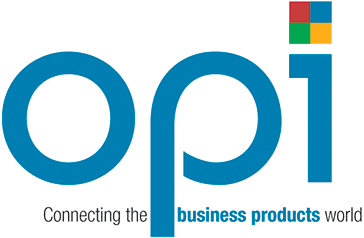“How To…Protect Your Reputation” is originally published in the May 2018 issue of OPI. To read the original feature, click here: How To…Protect Your Reputation.
Social media is a great way to market your company, but it can also have a significant impact on your brand’s reputation. As Warren Buffet famously said: “It takes 20 years to build a reputation and five minutes to ruin it.”
It can be alarming for a brand to suddenly find itself at the centre of a social media storm, or being attacked for something that it just didn’t see coming. Just ask Paperchase, which came under pressure from the Stop Funding Hate campaign for running a Christmas campaign in the Daily Mail newspaper. It apologised for the promotion and vowed not to do it again.
Every brand needs to be prepared to face the wrath of a social media mob at some point. Being proactive about it means you can manage your reputation and avoid many of the issues that catch brands unawares. There are a number of things you can do to avoid a reputational issue and build a positive and engaged audience:
Listen to what people are saying
Use a social media listening service to understand what people are saying online about your company. Analyse the data to see if there are common themes that you can learn from and act upon. Listening to social media conversations could highlight an issue that you should address – and you might be able to catch it early enough to avoid a bigger problem.
You could even use this for R&D, analysing hard data that shows what people want to buy from you.
Know your audience
At a time when the US President regularly calls out brands on Twitter, and companies are having to take a stand on political issues, it has never been more important to understand what your customers believe in and expect from you.
While we don’t advocate that brands get publicly involved in party politics, you could find yourself in a situation where you need to have a position on an issue that is inherently political. The gender pay gap is an obvious current example. Or if your business relies on migrant workers, you might have to take a stand on immigration issues. So find out what matters to your employees and to your customers. You never know when you might have to defend them publicly.
Your social media presence should reflect your brand values
Brands invest heavily in creating and communicating their values. Your social media presence should adhere to those values. If one of them is diversity, for example, then make sure that’s reflected in the content you promote on social media. Or if you’re proud of how you give back to the community, then show that on your channels too.
Be open and honest
If social media has taught us anything, it’s that people will dig up everything you try to bury. If you’re going to talk about your sustainability policies, make sure they stand up to scrutiny. Consumers have never been so well-informed, nor had so much information available to them. We talk about ‘conscious consumers’ now – they want to know where products are sourced from, whether paper comes from sustainable forests, or if that factory in China has good working conditions. Be prepared to answer difficult questions and do it honestly and openly.
Post in your brand’s tone of voice
Does your tone of voice on social media sit comfortably on your website or your contact centre team? If you have more than one person posting on social media, do they sound similar in tone? Knowing what your tone of voice is on different channels – and in different situations – is really helpful to your social media team, and means people can hand over to each other at the end of a shift. It also avoids any faux pas.
If you’re dealing with a serious issue, that ‘cheeky’ tone may not be appropriate. And there’s nothing worse than a really corporate brand trying to talk on social media like a teenager.
Keep content real
Use social media to be creative with content, but make sure it is authentic and reflects who and what you want to be. You can usually be a bit less formal on social media, so experiment with images and videos. Measure what works well, ie what gets the most engagement, clicks, shares and comments, so you can do more of it. Whatever content you’re creating for social media channels, it should be real and authentic to the brand.
Engage with people
This is where the rubber hits the road. All the preparation you’ve done is leading to this point. It’s your chance to showcase how you want your brand to be seen. Get involved in conversations, post about things the company cares about, and of course post your own content, such as new products, catalogues, initiatives, opinions and blog posts to amplify your message. It should be a mixture of your own content, other people’s content and conversation.
Invest in top-quality customer service
Great customer service is a differentiator for brands. Research shows that 70% of consumers have used social media for customer service on at least one occasion, and that customers spend 20-40% more with companies when they engage and respond positively to them on social media. This means social media customer service is great for sales.
But it’s also important for reputation management. If you regularly – and publicly – interact with customers on social media, you will build trust among your audiences. You will gain a reputation for being open and honest, and for helping your customers, all of which will stand you in good stead if you have to field an issue in the future.
Plan for a crisis
However well you do all these things, at some point, you will probably have to deal with an issue or two. Prepare for it. Have a crisis plan in place that includes social media. Have the ability to scale up your team to cope with the increased volume. Know who you should call at 3 am if you need to. Practise managing your social media platforms in a crisis by running a simulation that will identify any holes in your plan before you have to use it for real.
Above all, remember this: the reputation you have when you hit a crisis is the one that will see you through that crisis. Make sure you’ve done everything you can do give yourself the best chance of emerging unscathed and have a crisis plan in place that includes social media.
Tamara Littleton is founder and CEO of The Social Element. She set up the global social media agency in 2002, before Facebook and Twitter even existed, but knowing that the future would be digital. The agency now operates in 45 countries and works with some of the world’s largest brands, including Oreo, Toyota, The Oprah Winfrey Network and Nissan. In 2013, Littleton also co-founded Polpeo, a crisis simulation platform for companies and their agencies.





